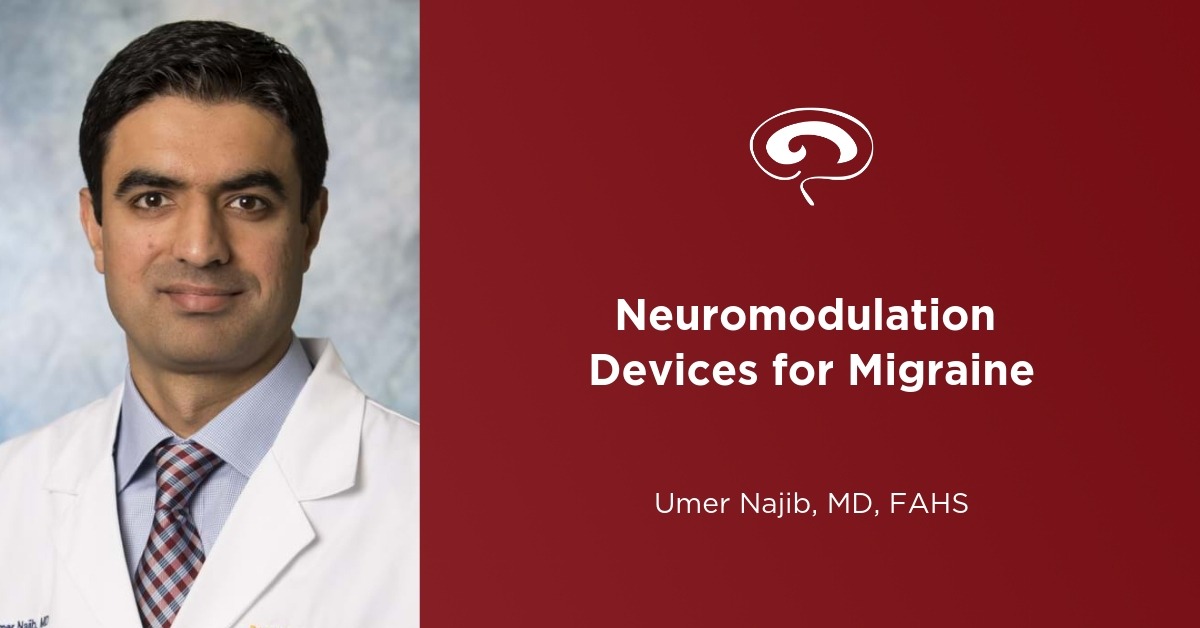
Neuromodulation as a Treatment for Migraine
Umer Najib, MD, FAHS, shares who is a suitable candidate for non-invasive neuromodulation and explains how to gauge treatment success
Umer Najib, MD, FAHS, is an assistant professor in neurology at the Rockefeller Neuroscience Institute at West Virginia University and program director for the Headache Medicine Fellowship. He recently spoke on neuromodulation as a potential treatment for patients with migraine. Watch the full interview from the 2018 Scottsdale Headache Symposium here:

Neuromodulation is the modulation or manipulation of the central pain system via invasive or non-invasive electrical pulses or magnetic pulses. Najib highlighted three types of FDA-approved non-invasive neuromodulation: the external trigeminal nerve stimulation, which stimulates trigeminal nerve branches via application to the forehead for the prevention of migraine; transcranial magnetic stimulation, which provides noninvasive, acute and preventive treatment via stimulation through the back of the skull; and vagus nerve stimulation, which occurs on the neck for the treatment of acute episodes.
“For clinicians treating patients with migraine or other headache disorders, neuromodulation is considered when the patients are either refractory to first-line treatments or if the patients are unable to tolerate first-line treatments,” Najib said. “And that’s a good point for the treating physician to think about non-pharmacological options.”
Najib said that for a patient, success with neuromodulation devices is viewed as a successfully aborted migraine episode, as well as a decrease in the number of headache days or episodes. Najib added that improvements in quality of life is also considered the treatment’s success.
Najib noted that the timeline for results also depends on why neuromodulation is being used for treatment.
“If the device is being used for the abortive treatment or for the acute treatment of headache episode, we typically see a positive response after a few times that the patient has used [neuromodulation],” Najib said. If the patient has used the device five to 10 times to treat an acute episode and it’s not successful, then it’s perhaps time to move on and find another means of treatment.”
Najib said that if the device is being used for the preventive treatment of migraine, success is generally observed anywhere between a few weeks to a couple of months after the start of therapy. He noted that these devices are generally safe, but advised against their use among post-surgical patients or patients with metal implants in the face, head, or neck.
“The field of neuromodulation is fast-shifting,” Najib said. “There are new devices that are being approved almost every year now. So, it’s good to keep up with the options; it’s good to know the indications of these devices and how to use them.”


